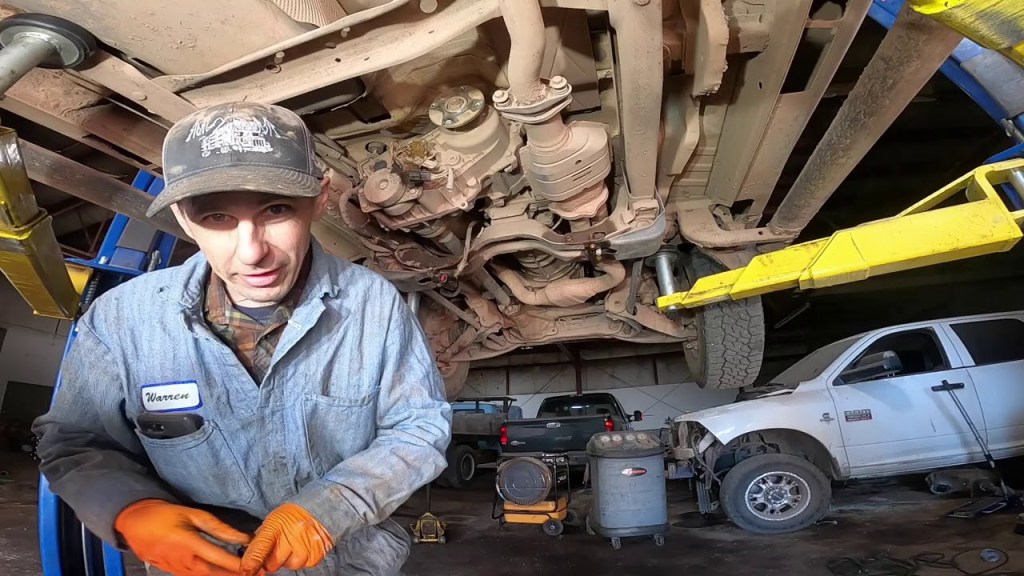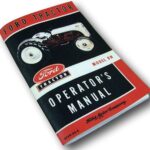Discover The Exact Slave Cylinder Location On 2004 Ford Ranger Manual Transmission For Smooth Shifting!
Slave Cylinder Location on 2004 Ford Ranger Manual Transmission
Introduction
If you own a 2004 Ford Ranger with a manual transmission, then you might want to know the location of the slave cylinder. The slave cylinder is a vital component of the clutch system that engages and disengages the clutch when shifting gears. This article will provide you with all the information about the slave cylinder location on 2004 Ford Ranger manual transmission.
Overview
The 2004 Ford Ranger is a compact pickup truck that is available in both automatic and manual transmissions. The manual transmission features a hydraulic clutch system, which consists of a clutch pedal, master cylinder, slave cylinder, and clutch release fork. The slave cylinder is responsible for releasing the pressure on the clutch when the pedal is depressed, which allows the driver to shift gears smoothly.
2 Picture Gallery: Discover The Exact Slave Cylinder Location On 2004 Ford Ranger Manual Transmission For Smooth Shifting!


Purpose
The purpose of this article is to provide Ford Ranger owners with the knowledge of where the slave cylinder is located on their manual transmission. This information is important for anyone who wants to maintain or repair their clutch system. By knowing the location of the slave cylinder, you can easily identify and fix any issues that may arise with your clutch system.
Manual’s Structure and Organization

Image Source: ytimg.com
The Ford Ranger manual is structured and organized to provide owners with the information they need to operate and maintain their vehicle. The manual includes sections on the vehicle’s specifications, controls, functionalities, fluid capacities, various models, technologies, user-friendly features, tire maintenance, interior, exterior, towing capacities, additional resources, troubleshooting guides, updates and revisions, safety, price, digital and online manuals, and more.
Importance
The slave cylinder is a critical component of the clutch system, and without it, the clutch will not function correctly. Knowing the location of the slave cylinder on your 2004 Ford Ranger manual transmission will allow you to diagnose and repair any clutch-related issues that may arise. This knowledge can save you time and money by avoiding expensive repairs or replacements.
Body
What is a Slave Cylinder?
A slave cylinder is a hydraulic device that operates the clutch in a manual transmission vehicle. It is responsible for releasing the pressure on the clutch when the pedal is depressed, which allows the driver to shift gears smoothly. Without the slave cylinder, the clutch would not disengage, making it difficult to shift gears.
Who Needs to Know the Slave Cylinder Location?

Image Source: ytimg.com
Anyone who owns a 2004 Ford Ranger with a manual transmission should know the location of the slave cylinder. This knowledge can be beneficial for anyone who wants to maintain or repair their clutch system.
When Should You Check the Slave Cylinder?
You should check the slave cylinder if you notice any issues with your clutch system, such as difficulty shifting gears or a slipping clutch. You should also check the slave cylinder during routine maintenance checks to ensure that it is functioning correctly.
Where is the Slave Cylinder Located?
The slave cylinder on a 2004 Ford Ranger manual transmission is located on the driver’s side of the transmission bellhousing, near the firewall. It is a small cylinder-shaped device that is connected to the clutch release fork.
Why is the Slave Cylinder Location Important?
Knowing the location of the slave cylinder is crucial for anyone who wants to maintain or repair their clutch system. If you know where the slave cylinder is located, you can identify and fix any issues that may arise with your clutch system.
How Do You Replace the Slave Cylinder?
To replace the slave cylinder, you will need to remove the transmission. This is a complicated and time-consuming process that requires special tools and knowledge. It is recommended that you take your vehicle to a qualified mechanic to replace the slave cylinder.
FAQ
Q: How do I know if my slave cylinder is bad?
A: You may notice difficulty shifting gears or a slipping clutch if your slave cylinder is bad.
Q: Can I replace the slave cylinder myself?
A: It is recommended that you take your vehicle to a qualified mechanic to replace the slave cylinder.
Illustration/Example Paragraphs
Key Features
The 2004 Ford Ranger manual transmission features a hydraulic clutch system that includes a master cylinder, slave cylinder, clutch release fork, and clutch pedal. The slave cylinder is a critical component of the clutch system and is responsible for releasing the pressure on the clutch when the pedal is depressed.
Controls
The clutch system on the 2004 Ford Ranger manual transmission is controlled by the clutch pedal, which is located on the driver’s side of the vehicle. The clutch pedal is connected to the master cylinder, which pumps fluid to the slave cylinder, which then activates the clutch release fork.
Functionalities
The clutch system on the 2004 Ford Ranger manual transmission is responsible for engaging and disengaging the clutch when shifting gears. The slave cylinder is a vital component of the clutch system and is responsible for releasing the pressure on the clutch when the pedal is depressed.
Fluid Capacities
The 2004 Ford Ranger manual transmission requires a specific type of hydraulic fluid for the clutch system. The fluid capacity for the clutch system is approximately 0.7 quarts.
Various Models
The 2004 Ford Ranger is available in both automatic and manual transmissions. The manual transmission is available in several different models, including the XL, XLT, and Edge.
User-Friendly Features
The 2004 Ford Ranger manual transmission features a hydraulic clutch system that is easy to operate and maintain. The clutch pedal is located on the driver’s side of the vehicle and is easy to reach. The clutch system is also protected by a dust cover to keep dirt and debris out of the system.
Tire Maintenance
Regular tire maintenance is crucial for the performance and safety of your 2004 Ford Ranger manual transmission. It is recommended that you check your tire pressure and tread depth regularly and have your tires rotated every 6,000 miles.
Conclusion
In conclusion, knowing the slave cylinder location on your 2004 Ford Ranger manual transmission is essential for maintaining and repairing your clutch system. The slave cylinder is a vital component of the clutch system and is responsible for releasing the pressure on the clutch when the pedal is depressed. If you notice any issues with your clutch system, such as difficulty shifting gears or a slipping clutch, you should check the slave cylinder. It is recommended that you take your vehicle to a qualified mechanic to replace the slave cylinder. Overall, the 2004 Ford Ranger manual transmission is a reliable and user-friendly vehicle that is perfect for anyone who wants a compact pickup truck with excellent performance and functionality.
This post topic: Manual


